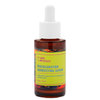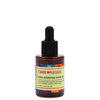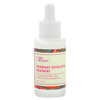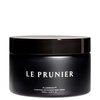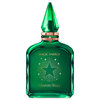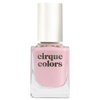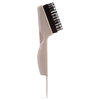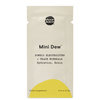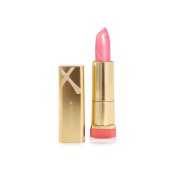
1925: Factor shows actress René Adorée a new kind of rouge. Hulton Archive, Getty Images.
You know him best by his products: Colour Elixir Lipstick, Facefinity Foundation, Miracle Touch Blush. But have you ever thought about how Max Factor, one of the most trusted names in makeup, got his start? Once upon a time, starting a cosmetics business was much more complicated. You couldn’t, say, order mixable bulk pigments online to start developing colors for your startup makeup line. Come to think of it, “once upon a time,” what we know as makeup today was virtually unheard of!
Let’s travel back to 1909, when Max Factor, a immigrant Polish cosmetician, launched the brand that would go on to become one of the biggest names in beauty history. At the turn of the 20th century, cosmetics were not the easy-to-apply, bottled products we’re so familiar with now. Grease paints were the widest available option, and because the ultra-thick formula and garish colors were so hard to work with, they were largely reserved for stage actors.

1924: Factor teaches Hollywood film star Louise Fazenda how to apply lipstick.
It was the film industry—completely new with the invention of the moving picture in 1895—that ultimately launched Factor’s career. You’ve probably seen references to film in Max Factor ads and products. That might be because, if not for Max inventing the world’s first thin, easy-to-work-with version of grease paints, glamourous Hollywood makeup might not have taken off so quickly.
Factor’s advantage was that he ran his own cosmetics lab. That meant he was able to customize formulas and shades for his clients, mostly that era’s leading film actresses—Joan Crawford, Jean Harlowe, Bette Davis, and Judy Garland. His beauty salon, located near Hollywood Boulevard, became a staple spot for on-screen beauties.

Remarkable changes happened in the Max Factor product line as the film industry grew larger and more advanced. When the quality of black and white film got better, Factor created Color Harmony Face Powder to keep faces matte on camera. When sound and softer lights replaced orthochromatic, silent movies in 1927, Factor answered with a more precise Panchromatic makeup in 1929. And in the late 1930s, when full-color films started to debut, Factor, along with his son Frank, developed a product concept that’s still in use today: Pan-Cake makeup.
Pan-Cake makeup was suited for on-screen looks, but it was also really wearable in the day-to-day. It also came conveniently packaged in a pressed compact, making it one of the first portable products of its kind. It was just one of the revolutionary cosmetics developed by Factor before his death in 1938. His invention of the first-ever lip gloss in 1930 was designed to make lips appear better in black and white films, and was available only to actresses at first. Two years later, he released it commercially with the name “X-Rated,” which was incredibly scandalous at the time. It was, perhaps, a stab at the newly introduced Motion Picture Production Code (aka the Hays Code), Hollywood’s first set of censorship guidelines.
Nail polish was another Factor focus. He created a non-liquid, tinted powder that was buffed onto nail beds to enhance their pink tones. Eventually, he created a white liquid variety to paint on the tips. Before long, Liquid Nail Enamel was launched, the earliest version of the nail colors we all collect now.

1933: Factor takes precise measurements of a model’s head and face with his beauty micrometer. General Photographic Agency/Stringer, Getty Images.
Of course, not all Max Factor creations were a hit. The Beauty Micrometer, developed to measure clients faces in order to find structural flaws that makeup could correct, looked more like a medieval torture device than a cosmetologist’s tool. The birdcage-like headpiece worked by tightening flexible metal bands across the face and around the head to measure facial symmetry. Only one Beauty Micrometer exists and is on display currently at the Hollywood Entertainment Museum. (Perhaps Factor is also unknowingly responsible for the phrase “beauty is pain”?)
A family man, Factor’s legacy was carried on by his son Frank (who changed his name to Max Factor Jr.), and then eventually his grandsons, and now great-grandsons—Dean and Davis Factor, have gone on to develop their own wildly popular line: Smashbox.
Max Factor makeup is still one of the most trusted brands in the film industry. It’s had to adapt quite a bit with the death of Technicolor and modern technologies, namely digital and high-def. Today, Max Factor makes a broad range of products, including foundations, concealers, eye shadows, lipsticks, mascaras, and nail polishes. And yes, Pan-Cake makeup is still going strong in an updated Pan-Stik formula.
Max Factor will never get to see just how expansive the beauty market is today. But one thing’s certain—the industry wouldn’t be where it is if it wasn’t for him and his legacy. His influence is evident in just about everything we see on department store shelves and beauty counters: “stay all day” lip colors, under eye concealers, and waterproof mascaras. Not only did the Max Factor company invent a number of the essential products we use today (and yes, that includes the three we just listed), Factor himself also invented the term “makeup.” Consider your mind blown.
Featured Products
You Might Also Like
-
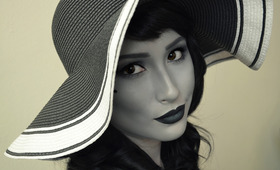
Community
10 Looks To Get You In the Spirit of Halloween
- 679
-
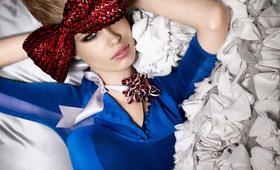
Top 3
Festive Hair Accessories
- 71
-
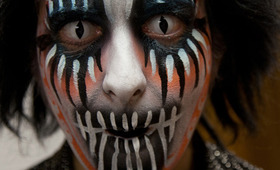
Places and Spaces
23 of the Most Horrifying Photos From the Haunted Hayride at Griffith Park
- 400
-

Special Features
A Closer Look at Common Perfume Ingredients
- 208
-
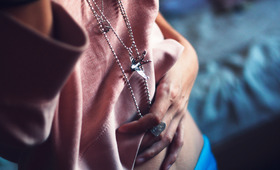
Fitness
outFit With Kit: Ease the Bloat for a Flatter Tummy
- 1169
-

Fitness
outFit With Kit: The Morning Wake-Up Workout
- 1681
-

Trends
Get Ready for Fall
- 346
-

Fitness
Sick of Feeling the Physical Pain of Your Desk Job? These Moves Are For You
- 536



